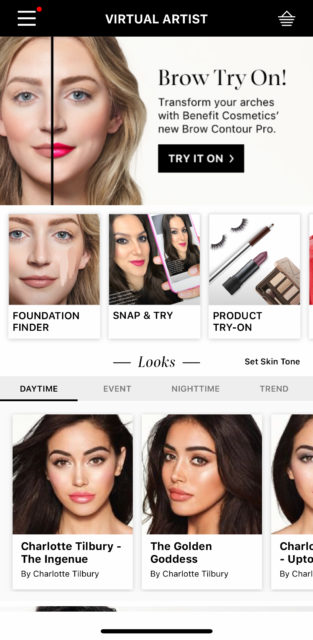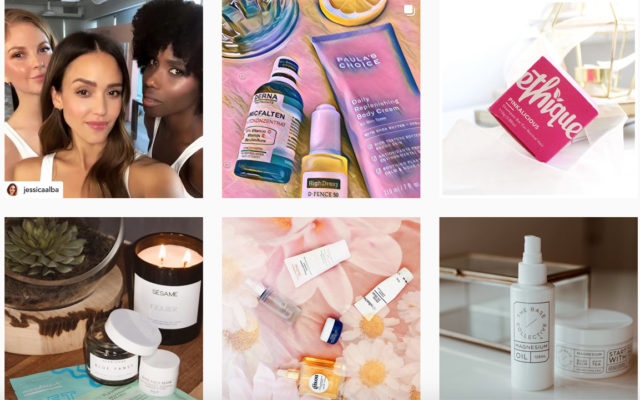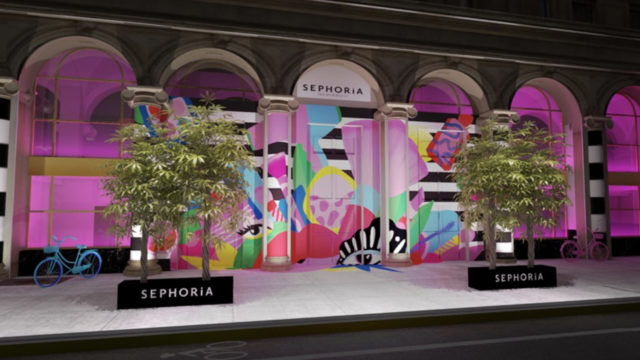This week in social media news, Facebook is working on launching its own cryptocurrency, Twitter is in the process of developing “Hide Replies” feature, TikTok promises to be the next big thing for marketers, Twitter introduces new Twiter Business podcast, Facebook announces premium video advertising option, Snapchat updates “Explore” with Snap ads courses for marketers, Instagram is spotted testing new title option for Instagram Live, Tinder is launching a Spring Break mode, brands are pulling their advertising from YouTube, Instagram is testing a public “Collections” feature similar to Pinterest boards and survey reveals how consumers sort out brand authenticity on social media.
Facebook To Launch Its Cryptocurrency
The New York Times reported on Thursday that several internet outfits, including Facebook, are planning to launch new cryptocurrencies in 2019 that will make it easy for users to send money to contacts in their messager, similar to Venmo and PayPal.
Why it matters: Since products, such as Venmo have already proved popular with consumers, it is reasonable to predict that with cryptocurrency, Facebook will add more value to the platform and its users.
The details: According to The New York Times, the company is almost ready to start selling the Facebook coin to consumers. The company is also looking to operate with different foreign currencies, besides the dollar. In addition, Facebook is taking apart its messaging infrastructure and connecting Messenger, WhatsApp and Instagram. The incorporation, which could take over a year, would extend the reach of Facebook’s digital currency across the 2.7 billion people who use one of the three apps each month.
Facebook’s Workplace Reached 2 Million Paying Users
On Friday, Facebook released updated numbers on its Workplace performance in a blog post, claiming the platform now sees 2 million paid users.
Why it matters: The report demonstrated that Workplace is different from the competitor Slack and highlighted the Workplace’s success in an area that Slack, Microsoft Teams are also chasing, which is enterprise users.
The details: The report said that Workplace now serves 150 companies with more than 10,000 users each on the platform. These companies include corporate giants, such as Nestle, Danone and Delta Airlines and startups, like Farfetch. “We put these people at the center of everything we do. Whether it’s releasing new features like Safety Check so frontline workers can get the support they need in a crisis; leveraging industry-leading machine learning technology from Facebook to help ease the burden of email overload; or building best-of-breed integrations with companies like Microsoft, Google, ServiceNow, Okta, Box and Netskope so our customers can get more from the SaaS apps they already use,” the report stated.
Twitter Is Working On “Hide Replies” Feature Release
Twitter is developing a feature that would let users hide replies to their tweets, TechCrunch reported on Thursday. The “Hide Tweet” feature was first discovered by Jane Manchun Wong, who shared her findings on Twitter.
Why it matters: The feature will allow the users to “mute” toxic or unreasonable comments.
The details: “Hide Replies” wouldn’t let the users permanently hide replies to tweets, but it would make those replies more difficult to see. Michelle Yasmeen Haq, senior product manager at Twitter, confirmed in a statement for CNBC that the “Hide Tweet” and “View Hidden Tweets” controls are currently in development, as part of its drive to promote “healthy” conversations on the platform. By giving users the option to hide replies, Yasmeen Haq said, Twitter can “balance the product experience between the original Tweeter and the audience.”
Twitter Offers ‘Character Count,’ The New @TwitterBusiness Podcast
Twitter announced on Wednesday the launch of their new “Character Count” podcast for marketers.
Why it matters: The podcast aims to help marketers and advertisers feel supported and inspired by the expert guests and the Twitter Business team.
The details: In each episode of “Character Count,” you can expect to hear about Twitter’s most interesting advertising stories and learn the mechanics of the most effective campaign, as well as find out more about Twitter’s audience.
“We’ll hear how @MontereyAq uses memes to raise ocean awareness, how @Dropbox builds warmth with their customers, how @SimonBooks brought a legacy brand online—and more,” the statement from Twitter said.
Will TikTok Be Relevant To Marketers?
According to Digiday, TikTok has already started testing ads in the US, with GrubHub being among the first to try out the ad units. The question of the platform sticking around, however, still stands. SocialMediaToday is sorting it out.
Why it matters: New social media platforms pop up all the time, promising to become “the next big thing.” Most, however, don’t make it. It is important to analyze their relevance to marketers at an early stage.
The details: According to a SocialMediaToday analysis, TikTok has good chances at sticking around. Although the platform is quite similar to other brief video content tools, such as Vine, it’s is growing fast. What also sets TikTok apart is that besides providing an alternative outlet for creative expression to the users, the features offered in western markets were first tested among the platform’s native, Chinese userbase first.
TikTok is still testing waters with its ad options, but its Chinese version, “Douyin” is living proof of the company’s experience and understanding of the subject, as Douyin has more than 300 million monthly active users.
Facebook Announces ‘Facebook Showcase’ Premium Video Advertising Option
Facebook announced in a statement on Tuesday the launch of “Facebook Showcase” ad program.
Why it matters: The program should provide wider opportunities for advertisers to increase brand awareness in connection to the most popular “Watch” shows. Also, according to the statement, “Showcase” can help advertisers reach younger audiences that are not easily reachable on TV. “Over the past three months, 43% of people in the US who watched In-Stream Reserve-eligible content on Facebook were 18-34 years old,2 compared to 28% of TV viewers,” the statement said.
The details: Showcase is currently available for campaigns in the US and the products offered include:
- In-Stream Reserve. This product allows advertisers to reach people watching video from a selection of numerous publishers and creators.
- In-Stream Reserve Categories allows advertisers to reach people within contextually relevant content.
- Sponsorships give advertisers an opportunity to be the exclusive sponsor of a program.
Snapchat Launches Updated Snap Ads Education Courses for Marketers
Snapchat recently announced in a statement that its “Explore” education courses will be upgraded with a new range of tools and insights for marketers and advertisers.
Why it matters: Snapchat ad education courses is a useful source offering many educational course options, which touch upon nearly everything: from ad formats to data analytics.
The details: Snap ads is a convenient addendum to the “Explore” platform. It will provide informative overviews of the various Snap ad options and tips on how they can be utilized. In addition, the tool includes an updated Snap ads accreditation program.
Instagram Spotted Testing New Title Option for Instagram Live
SocialMediaToday reported on Wednesday that Instagram is testing new title option for Instagram Live.
Why it matters: The new title frame might help users to better engage others with their Live stream content.
The details: According to SocialMediaToday, the tip was shared on Twitter by user Giuseppe Foresta (and Matt Navarra). The new option appeared at the top of the Instagram Live launch tile, prompting the users to “add a title for your viewers.”
Tinder Launches a Spring Break Mode
TechCrunch reported on Tuesday that the dating app Tinder is launching a new feature “Spring Break mode” for the college-aged users, which will allow them to look up potential matches in their Spring Break destinations.
Why it matters: “Spring Break, like Tinder, is a staple for many college students across the country. We’ve historically seen huge upticks in Tinder usage during Spring Break in these destinations, and we are excited to give users the unique experience to connect before they pack their bags,” Jenny Campbell, chief marketing officer at Tinder, told TechCrunch in a statement.
The details: Spring Break mode will be working starting March 4 through March 31, 2019, and will cover 20 popular destinations, such as Cabo, Lake Havasu, Las Vegas, Miami, New Orleans, Puerto Rico, Puerto Vallarta, San Diego and others. To opt in, Tinder U users will have to look for the Spring Break card and when they see it, select their Spring Break destination to see who else is going. This destination will then be displayed to potential matches through their profiles.
Nestle, Disney Pull YouTube Ads
Bloomberg reported that Disney is pulling its advertising spend from YouTube, along with a laundry list of other other companies including Nestle SA and Epic Games after a blogger, Matt Watson, released a 20-minute video on the platform about comments on YouTube being used to aid a “soft-core pedophilia ring.”
Why it matters: This is ultimately a brand safety issue. If the brands can’t control where the ads appear they will pull them for the time being.
The details: “Any content–including comments–that endangers minors is abhorrent and we have clear policies prohibiting this on YouTube. We took immediate action by deleting accounts and channels, reporting illegal activity to authorities and disabling violative comments,” a spokeswoman for YouTube said in an email to Bloomberg. YouTube also published an updated policy about how it will handle content that is not appropriate.
YouTube Pulls Ads From Anti-Vaccine Videos
According to BuzzFeed News, YouTube also had to remove ads on videos that advocate against vaccination after advertisers complained about programmatic ad placements on such videos.
Why it matters: These videos fall under YouTube’s policy, which prohibits the monetization of videos with “dangerous and harmful” content which again, affects the reputation of the brands advertising.
The details: BuzzFeed News found that even for queries like “are vaccines safe?” YouTube usually pulls results from credible sources, such as a children’s hospitals’ data but its “Up Next” algorithm frequently suggested recommendations for anti-vaccination clips.
Seven different advertisers told BuzzFeed News they were unaware that their ads were appearing on videos that advocate against vaccinating children, and contacted YouTube to terminate the programmatic placements.
“We have strict policies that govern what videos we allow ads to appear on, and videos that promote anti-vaccination content are a violation of those policies. We enforce these policies vigorously, and if we find a video that violates them, we immediately take action and remove ads,” a YouTube spokesperson said in an email statement to BuzzFeed News.
Instagram Is Testing Public “Collections” Feature
TechCrunch reported that Instagram is looking to challenge Pinterest. Code buried in Instagram for Android shows the company has prototyped an option to create public “Collections,” similar to Pinterest boards, to which multiple users can contribute.
Why it matters: Instagram public “Collections” could certainly inspire a new medium of content curation on the platform, enabling the users to “collect” their “bucket list” items, shopping wish lists or travel destinations.
The details: Instagram didn’t confirm testing to TechCrunch, but the “Make Collection Public” option was discovered by reverse engineering specialist Jane Manchun Wong. Wong was able to generate a screenshot of the prototype, which showed the ability to toggle on public visibility for a Collection, and tag contributors who can also add to the Collection.




